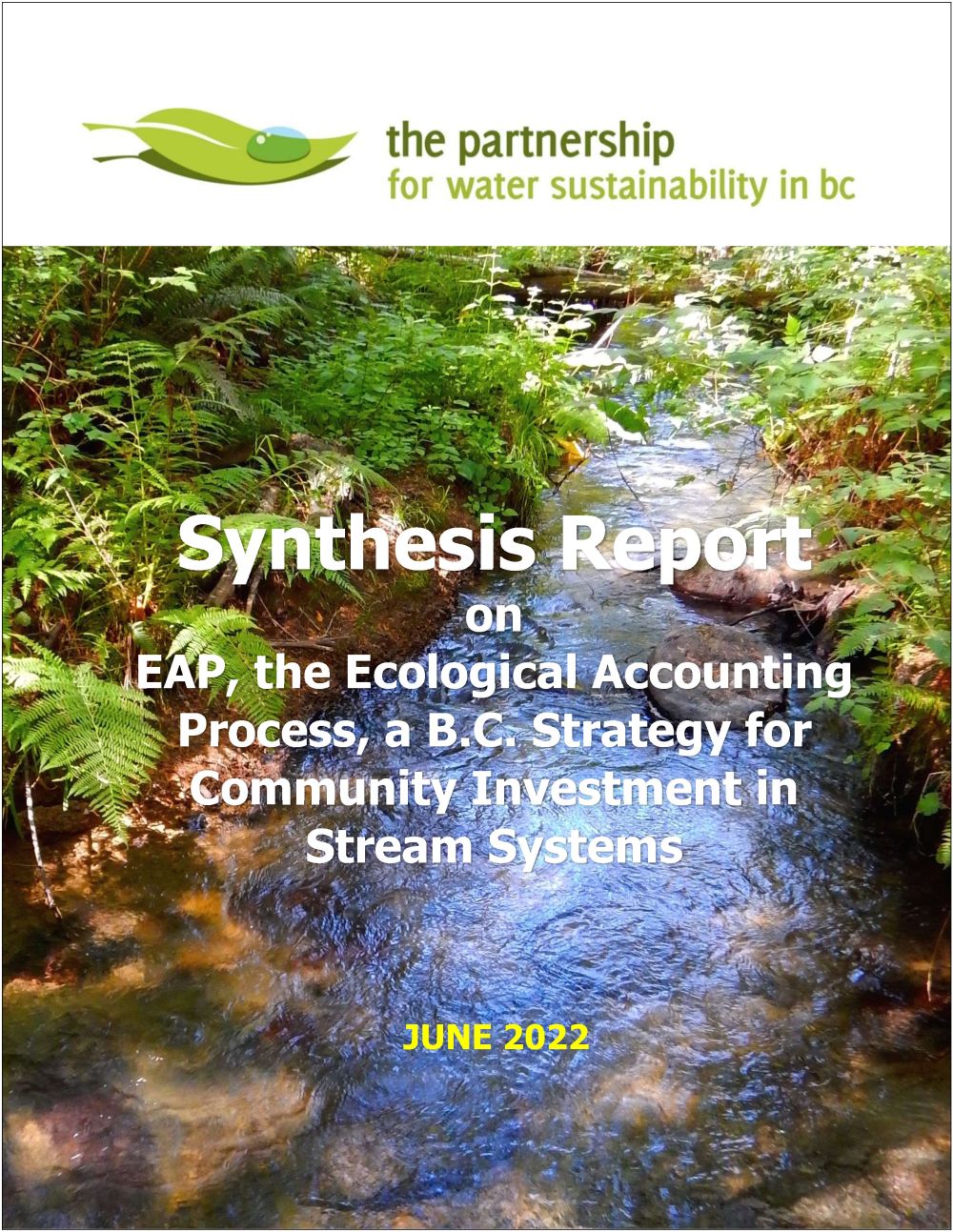CASCADING LEVELS-OF-UNDERSTANDING (GRAPHIC): “Our knowledge of how local government works helped us to conceptualize the idea of three levels-of-understanding as a commonsense way to communicate the context for EAP, the Ecological Accounting Process, so that it would resonate with local government decision makers,” explained Kim Stephens of the Partnership for Water Sustainability
Note to Reader:
The context for EAP, the Ecological Accounting Process, is protection and restoration of stream systems. Two questions set the stage for EAP. First, what is the stream worth to the community? Secondly, how would a municipality operationalize EAP to pay for stream maintenance and management (M&M)? Everything comes down to one question: What is the number for the line item in a local government annual budget?
How concepts are communicated is crucial. What is easily understood and measured gets implemented. The use of “cascading levels of understanding” as a mind map helps us cut through the rhetoric and jargon to provide meaningful context and content for EAP.

Ecological services provided by “green infrastructure” are not intuitively understood by the public, elected representatives and asset managers
“Management of natural assets within a local government’s Asset Management Strategy is an idea whose time has come. This statement sounds good but what does managing natural assets actually mean in the local government setting?” stated Kim Stephens, Partnership Executive Director.
“The ‘story of EAP’ is about the process to evolve a guiding philosophy, pragmatic methodology, and meaningful metrics for a systems approach to stream restoration. When examining the local government context, it is apparent that ecological services provided by green infrastructure are not intuitively understood by the public, elected representatives and asset managers.”
“And furthermore, natural assets is a vague term that has become a buzz word that is not helpful. Why not use plain language that creates a mental picture? Stream corridor systems, parks, and conservation areas – these are familiar land uses that constitute natural assets.”
“Recognition of the foregoing context is foundational. Our knowledge of how local government works helped us to conceptualize the idea of three cascading levels-of-understanding as a commonsense way to communicate the context for EAP so that it would resonate with local government decision makers.”
To Learn More:
Download a PDF copy of Living Water Smart in British Columbia: Local Governments Need Real Numbers to Deliver Green Infrastructure Outcomes.
Cascading Levels-of-Understanding
“A cascading mind-map describes three levels-of-understanding that provided the reality-check for development of EAP as an effective decision tool. Level One is understanding how local government works in British Columbia.”
“Drilling down, Level Two is understanding how asset management works in practice. Once the first two are mastered, Level Three is about how to actually integrate stream corridors and other natural assets into a local government Asset Management Strategy.”
“The three levels work together. One cannot have one without the others. That is why they are cascading. At the end of the day, everything comes down to one question: What is the number for the line item in a local government annual budget?“

Local Governments need Real Numbers
“When all is said and done, EAP is about ensuring that streams survive in an urban or urbanizing setting. Thanks to the innovation of Tim Pringle, EAP injects balance into the asset management conversation by giving equal weight to the environmental protection perspective and associated financial case for stream systems.”
“Local governments need real numbers to deliver green infrastructure outcomes. It is that simple. Tim Pringle’s unusual blend of education and career experience sets him apart from the usual suspects in the ‘ecological services crowd’. He is a sociologist who has a working knowledge of real estate finance. This experience propelled his breakthrough in developing the metrics for EAP.”
“EAP metrics are neither hypothetical nor speculative. They are grounded in reality. This assurance provides environmental planners with a sound starting point for conversations with engineers and accountants about the services that natural and constructed assets both provide.”

EAP is a BC Strategy for Community Investment in Stream Systems
The Synthesis Report is a distillation of over 1000 pages of case study documentation into a storyline that is conversational and written for a continuum of audiences that includes land use practitioners, asset managers, stream stewards, and local government decision-makers.
To Learn More:
Download and read a copy of the entire Synthesis Report on EAP, the Ecological Accounting Process, A B.C. Strategy for Community Investment in Stream Systems (2022), the 4th in the Beyond the Guidebook series of guidance documents.

DOWNLOAD A COPY OF https://waterbucket.ca/gi/wp-content/uploads/sites/4/2022/06/EAP-Synthesis-Report-Beyond-the-Guidebook-2022_Jun-2022.pdf

